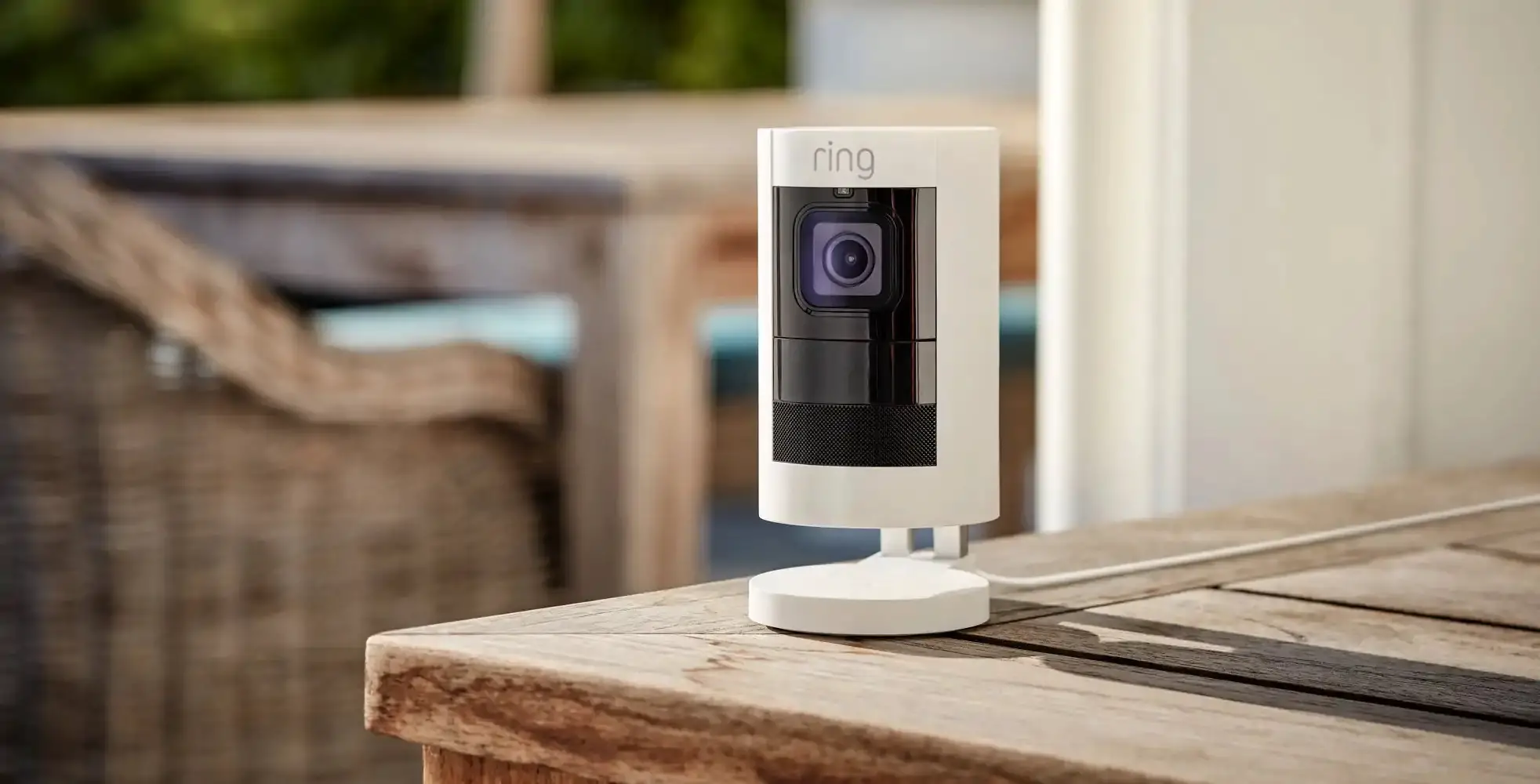Summary
Ring Stick Up has more to offer than Blink, but it requires a monthly subscription. Blink Outdoor is a great for those who want to avoid mostly subscriptions, but you’ll need to buy the unreleased Sync Module 2 for $30 to record for free.
Free
Blink and Ring require a subscription to be useful, but Blink has an option for free recordings if you buy the new Sync Module 2 (not released yet). Or if you’ve owned a previous generation Blink camera, your recordings will remain free.
Ring and Blink don’t give you basic features unless you pay for a subscription, but there are a few things you can do without paying. You can check the live feed from your device and you’ll get notifications when the camera senses motion, but you can only check the live feed as it won’t store anything. You can also have a conversation with someone at the door with two-way audio, but this might startle visitors as the camera will most likely be mounted high above them.
Free winner: Blink
Subscription
The Blink Cloud Storage is $30/year and the camera won’t record without it. Blink’s “Instant On,” or motion detection, records when it senses motion and stops when there’s no more movement. You can store footage for rolling 60-day period. After that, the oldest file is replaced with the newest. Clips can be exported to your device at any time.
You can change clip length between 5 to 60 seconds. Longer clips will make the batteries run out faster. This camera can record over 60 seconds, but it takes 10 seconds to reset. So if there is motion for more than 60 seconds, you’ll miss 10 seconds between clips. You can check the live feed from your device and you can set activity zones to avoid unwanted notifications from branches or cars. Unfortunately, Blink is missing person detection.
The Ring Protect plan is $30/year and the camera won’t record without it. This plan records motion and saves it for 60 days in the cloud. These clips can be shared or exported at any time. Ring records about 90% of the action, but the audio is often several seconds off, which makes it unreliable. Ring or Blink shouldn’t be trusted for real surveillance because they’re just affordable cameras, but with Ring, you have to pay for the basic features.
In the Ring app, you can set motion detection between frequent, standard, and light. Regardless of the setting, I found this camera misses motion every now and then. I expected premium options, like 24/7 recording, but there aren’t any.
Subscription winner: Ring
Hardware
This refers to how the camera is built and its associated features. Ring has a better build quality overall while Blink feels cheaper.
Blink runs on two AA batteries that should last two years, but I can’t see how that’s possible. Maybe on the lowest setting with the lowest video quality, but even this seems like a stretch. Most people will use this on medium quality for about 30-45 seconds of video. You should expect about a couple of months of use before the batteries must be replaced. It’s not ideal for heavy traffic. You can power it with a micro USB, but that might create some issues when it rains.
Blink requires you to plug a Sync Module into an outlet, but luckily, it doesn’t need to be plugged into the router. You’ll need one module for 10 Blink cameras. This camera can handle extreme weather from 4 to 113 degrees and it’s waterproof. The craftsmanship is lacking as the camera is built from cheap plastic and its flimsy mount is embarrassing. The battery cover latch has a hard time staying fully closed.
Ring is built better overall. It has a rechargeable battery that lasts about two months. Just remove the battery, charge it with a micro USB, and you’re back in business. Or you can buy additional batteries to avoid downtime. You can buy the powered Ring version for the same price if you have a nearby outlet. The Ring Stick Up hardware is basically the same quality as any other Ring product.
The base stand is better than Blink’s and the camera can be on a flat surface. You can also move the base stand to the back for a wall mount. There’s no need for a module or bridge as this camera runs entirely off of your router’s signal. It’s good for indoor and outdoor use as it’s waterproof and is safe from -5 to 120 degrees.
Hardware winner: Ring
Software
Here we’ll be discussing the app and software. Once again, Ring is better than Blink with more robust features and more features overall.
Blink is known for server issues. They have gotten better over the years, especially since Amazon acquired them, and my installation went smoothly. Notifications are only sent after motion has been recorded, not while the camera is active, but this is common for security cameras. You can set a schedule for when the camera is armed or disarmed to reduce pointless notifications.
Blink doesn’t have an online portal. Their phone app isn’t user friendly. Scheduling is much harder than it should be. There are thumbnails for the videos, but they are small and hard to see. It’s also easy to turn off motion tracking without knowing it. I did it several times by accident.
Since Blink is owned by Amazon, it works well with Alexa. You can see the live feed from Fire TV and Echo Show or use voice commands with Alexa. It won’t work with Google Assistant or Siri. There’s no geofencing, so you can’t set up recording based on your phone’s location. But, you can record clips whenever you’re viewing the live feed. AA battery limitations prevent scheduled recordings and it can take seven seconds to load live feed, and there’s a three-second lag between what is recorded and what is actually happening.
Blink has two-way communication, but it’s awful. Aside from the mic cutting out, you need to hold the mic button as you talk. On top of that, there’s a lag and it will be a few seconds until you hear the other person.
Ring has better two-way conversations and there’s no video lag. Plus, there’s no need to push a button for the mic to work, but the audio sometimes cuts out. The interface has a smooth timeline with thumbnails that are easy to see. You can also record on-demand with the push of a button.
You can schedule motion recording or activate “Motion Snooze” from the app that stops recording for an hour. Unfortunately, there’s no geofencing either, but you can set Alexa Routines to get around this. You can set motion zones, but Blink is actually better in this regard. The Neighbors Feed allows you to post videos and descriptions that other Ring users can see. This is good if there’s something that can affect the whole neighborhood, like a fire or major storm. You can have content uploaded to your Google Drive with IFTTT (along with other cool recipes for automatic actions).
Ring (another Amazon company) and Alexa work perfectly together and you can arm or disarm with voice commands or view the live feed from your Fire devices. It takes four seconds for the live feed to load. Ring also works with Google Assistant and you can control some smart locks, like Kevo, with the Ring app.
Software winner: Ring
Record Quality
Here’s another area that Ring wins with superior recording quality.
Blink Outdoor records 1080p video and a 110-degree field of view. Nighttime recording is OK, but could be improved. The audio recording is somewhat better on Blink, but there’s a lag.
Ring has the same 1080p recording and 110-degree field of view, but the video’s definition is better. You’ll definitely notice this when zooming in on details. The night vision isn’t great here either, but it’s better than Blink. The audio is recorded when the camera is triggered, but the sound is delayed by several seconds. The quality isn’t great, but it is better than Blink. However, if you want good recording quality, then you want Arlo Pro 2 or Eufy cameras. They are fantastic cameras that are ideal for DIY security.
Record quality winner: Ring
Final Thoughts
Neither Blink or Ring are ideal, but they are basic cameras for recording video clips when motion is detected. While Ring is better in terms of recording quality, hardware, and software, it’s nice the you can record locally for free once the Sync Module 2 is released.

